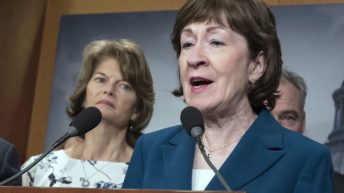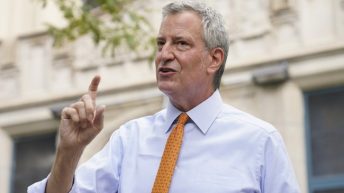The headline question — can anyone rescue the trafficked girls on L.A.’s Figueroa Street — exposes a failure of policy, enforcement, and political priorities; this piece traces how laws and leaders in California helped create an environment where trafficking flourished, names the officials and laws involved, and records firsthand and reported accounts that show how bad the situation became.
The New York Times investigated “the Blade,” a stretch near USC notorious for prostitution, drugs, and child sex trafficking, and detailed the growth of the trade without offering a real solution to the core problem. The reporting documented stings and victim stories but stopped short of holding the people writing and signing laws fully to account. That gap matters because policy choices shape what police can and cannot do on the streets.
Longstanding local conditions on Figueroa have been dire for decades, and residents who grew up or attended USC there saw the deterioration firsthand. One commentator noted, “Nothing’s changed in 36 years,” tracing the continuity of criminal activity and the failure of elected officials to fix it. When law becomes a shield for criminals, patrols and arrests lose effectiveness, and communities suffer.
Responsibility lands in several places: district attorneys who decline to prosecute, Sacramento lawmakers who rewrite criminal codes, and a governor who signs those changes. George Gascon’s directives that deprioritized misdemeanors such as loitering and prostitution are singled out as a turning point. When prosecutors refuse to pursue cases, police work becomes largely symbolic and victims are left exposed.
The New York Times noted factors that worsened trafficking during the pandemic, including school closures and more time on social media where predators lurk. The article quoted, “Part of that boom happened during the pandemic, when many girls were out of school and immersed in social media, where traffickers lurked. Teachers who would ordinarily follow up on absences or report signs of neglect could not.” Those lines highlight how policy and crisis intersected to create more opportunities for traffickers.
Local enforcement capacity also shrank as units were cut or reassigned, leaving divisions like the 77th Street unit understaffed to tackle vice and trafficking. The NYT reported, “For the 77th Street Division, which covers the northern half of the Figueroa Corridor, prostitution had always been a problem. But in recent years, the officers had seen the magnitude of child sex trafficking explode.” Resource shortfalls plus legal barriers combine to let predators operate with impunity.
State law changes compounded the problem when SB 357 removed loitering for the purpose of prostitution as an enforcement tool, a move framed as protecting marginalized people from profiling. Critics argue that repeal of Penal Code Section 653.22 hampered officers who once could clear groups of obvious offenders and identify minors. One passage in reporting observed, “The repeal, known as SB 357, was intended to prevent profiling of Black, brown and trans women based on how they dressed. But when it was implemented in January 2023, the effect was that uniformed officers could no longer apprehend groups of girls in lingerie on Figueroa, hoping to recover minors among them.”
Those legal shields mattered in practice: traffickers learned they could operate in plain sight, motor through neighborhoods in expensive cars, and move minors across state lines to supply the market. As one account described it, “With a dozen girls, one trafficker could easily make $12,000 a night. ‘Drugs are sold once and gone forever, but girls can be resold indefinitely,’ said Navarro.” When money and low risk align, criminal enterprise grows fast.
Political accountability followed in electoral cycles as anger over crime rose across Los Angeles and the state. Voters ousted a DA and supported measures to restore tougher penalties, while a new DA rolled back the previous directives and prosecutors began bringing charges again. But even with new leadership pursuing prosecutions, statutes like SB 357 still limit tools available to police on the street.
Legislative pushback did come in the form of AB 379, which made buying sex from minors a felony and drew support from some lawmakers who broke from party lines to fight trafficking. Political theater and headlines aside, the passage of statutory protections matters because it changes the legal lever officers and prosecutors can pull. Yet critics point out that other bills and priorities from influential legislators continued to shape a permissive environment.
The coverage and political response around Figueroa expose a deeper tension between progressive criminal-justice reforms and real-world public safety outcomes. Policy debates that begin with good intentions can have perverse effects when lawmakers ignore enforcement realities and the needs of vulnerable children. As one voice in the reporting put it bluntly, “We run Figueroa now,” reflecting how traffickers felt emboldened by decriminalization and lax enforcement.
Fixing this requires restoring prosecutorial teeth, rebuilding specialized investigative units, and changing laws that neuter street-level enforcement while protecting victims and punishing buyers and pimps. Communities need officers who can act, prosecutors who will charge, and legislators who put children ahead of ideology. Until those pieces align, the Blade will remain a grim example of what happens when policy choices favor theory over protection.





Add comment